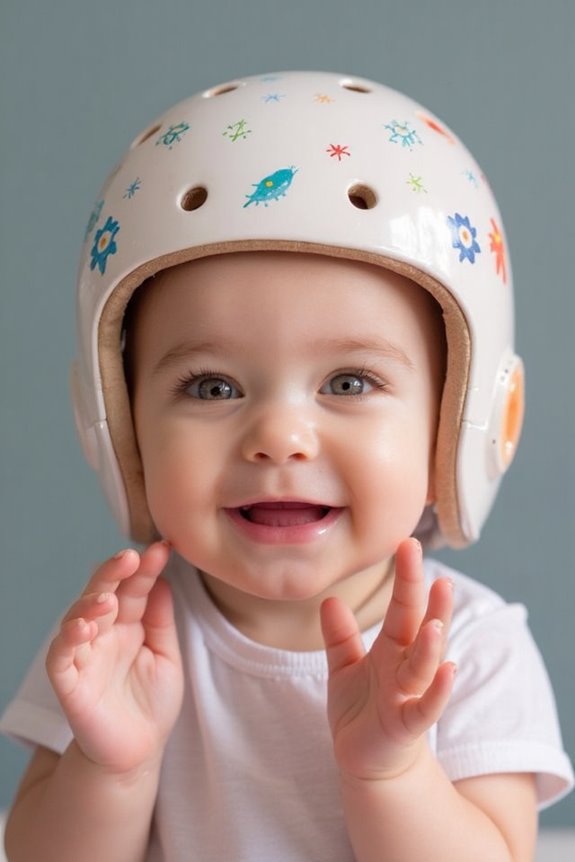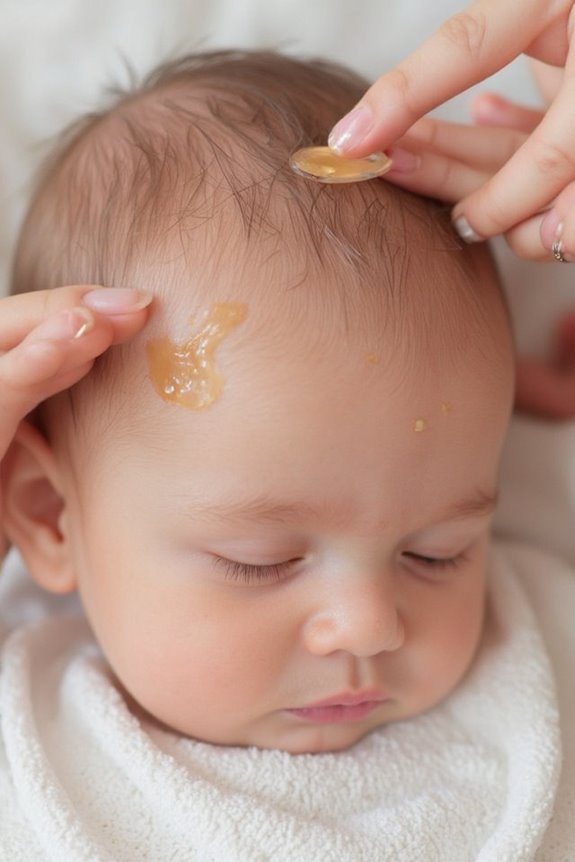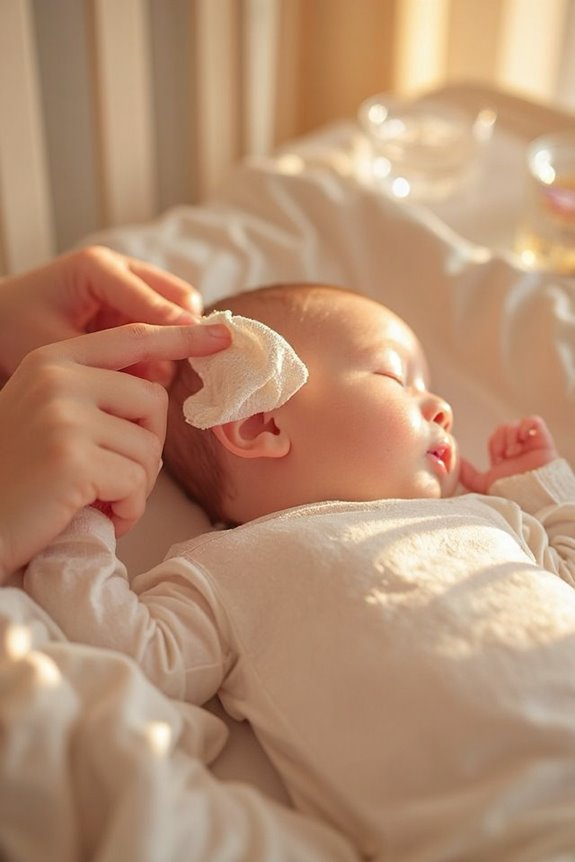Babies may need helmets to correct abnormal head shapes like plagiocephaly (flat spots) that develop from positioning or birth factors. A baby’s skull has soft spots and separate bones that can be gently guided with custom-fitted cranial orthotic devices. Treatment typically begins between 3-6 months when the skull is most malleable, requiring 23 hours of daily wear for several months. Early intervention prevents potential developmental and cosmetic issues. The following sections explain the complete helmet therapy journey.
Key Takeaways
- Babies wear helmets to correct abnormal head shapes like plagiocephaly (flat spots) or brachycephaly (wide, flat back of head).
- Helmet therapy gently guides skull growth by applying light pressure to flattened areas during rapid brain development.
- Treatment works best when started between 3-6 months when infant skulls are still malleable.
- Helmets prevent potential long-term issues including facial asymmetry, jaw misalignment, and psychosocial challenges.
- Babies typically wear custom-fitted helmets 23 hours daily for 3-6 months with regular adjustments.
Understanding Baby Skull Development and Growth
When your baby is born, their skull isn’t a single solid piece of bone like an adult’s. Instead, it consists of several separate bones with spaces between them called sutures. These spaces allow for two critical functions:
- Easier passage through the birth canal
- Room for rapid brain growth during infancy
Your baby’s skull has soft spots called fontanelles where multiple bones meet. The anterior fontanelle typically closes around 18-24 months, while the posterior fontanelle closes within the first few months.
Skull growth happens quickly in the first two years. By age 2, your child’s skull reaches about 90% of its adult size. During this time, the separate bones gradually fuse together as fontanelle closure occurs.
Regular monitoring guarantees normal development and helps identify any potential issues early.
Common Conditions Requiring Helmet Therapy
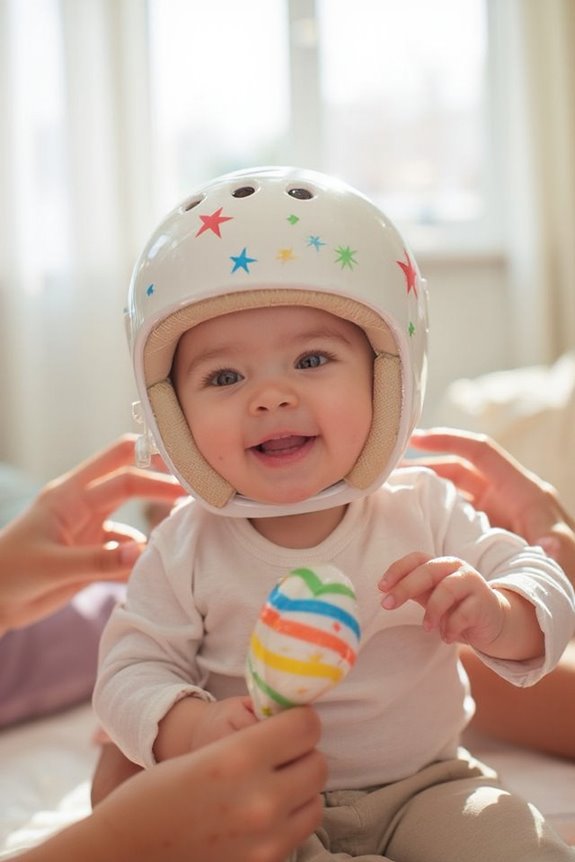
Several medical conditions may necessitate helmet therapy for your baby’s developing skull. The most common include:
- Positional plagiocephaly: Flattening on one side due to prolonged positioning
- Brachycephaly: Widening and flattening of the back of the head
- Scaphocephaly: Elongated, narrow head shape
- NICUcephaly: Pressure spots from NICU stays
Current treatment guidelines recommend starting helmet therapy between 3-6 months of age when the skull is most malleable. Different helmet types are prescribed based on your baby’s specific condition and severity.
I typically recommend conservative measures first, such as repositioning and tummy time. However, for moderate to severe cases where these methods don’t work, custom-fitted helmets worn 23 hours daily provide effective correction with regular monitoring by certified orthotists.
How Birth Factors Influence Head Shape
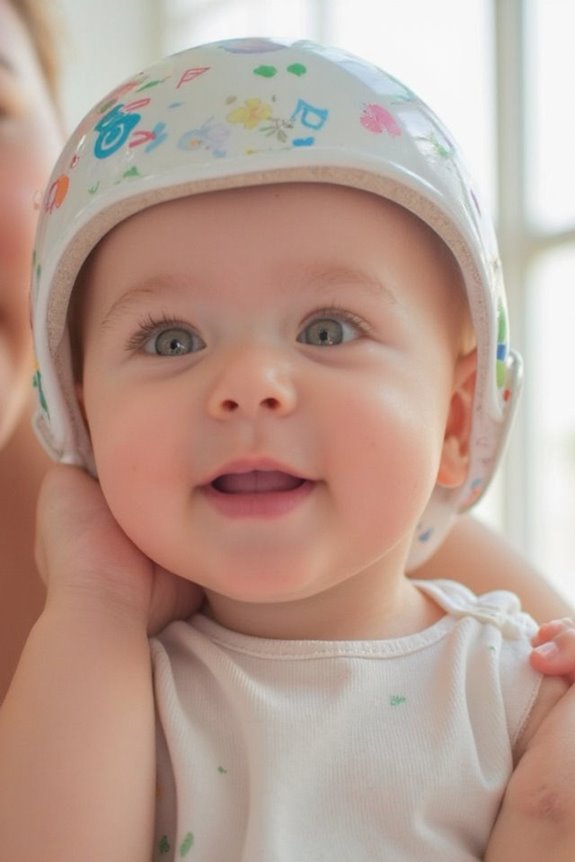
The journey through the birth canal greatly impacts your baby’s head shape, often in ways you’ll notice immediately after delivery. As your infant passes through this narrow passage, their soft skull may develop a cone-shaped appearance—a completely normal adaptation that typically resolves within weeks.
Several factors can affect head development:
- Birth canal pressure during vaginal delivery
- Premature factors like softer bones requiring careful positioning
- In utero conditions, especially for multiples with limited space
- Positional influences after birth, particularly during sleep
Monitoring growth through regular check-ups helps track asymmetry resolution. I recommend balancing back sleeping (for SIDS prevention) with supervised tummy time to prevent flattening. Maternal lifestyle impacts during pregnancy can indirectly affect fetal positioning, making parental education essential for understanding normal variations versus conditions requiring intervention.
The Science Behind Cranial Orthotic Devices
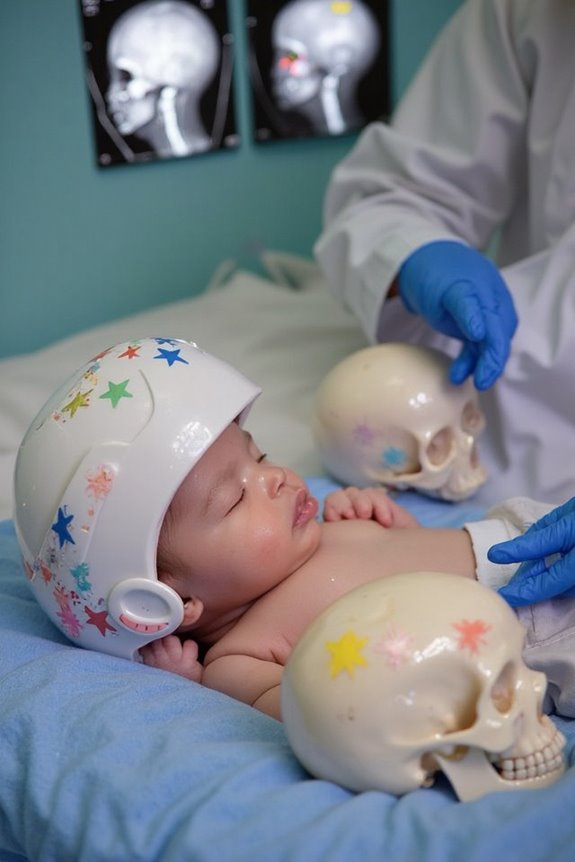
Despite their simple appearance, cranial orthotic devices represent sophisticated medical technology designed specifically to address infant head shape abnormalities. These custom-fitted devices apply gentle, consistent pressure to guide proper skull development and improve cranial symmetry over time.
How cranial helmets work:
- They redirect natural skull growth rather than forcefully reshaping the head
- Custom measurements guarantee precise fit for each baby’s unique needs
- Lightweight materials maximize comfort during 23-hour daily wear
- Adjustable components accommodate growth throughout treatment
Helmet design has evolved markedly, with modern options featuring:
- Breathable materials to prevent overheating
- Strategic openings for comfort
- Precise pressure points that target specific asymmetrical areas
Studies show these devices considerably reduce asymmetry measurements—from approximately 8.5mm to 5mm in many cases—providing better outcomes than positioning therapy alone for moderate to severe cases.
What to Expect During the Helmet Treatment Process
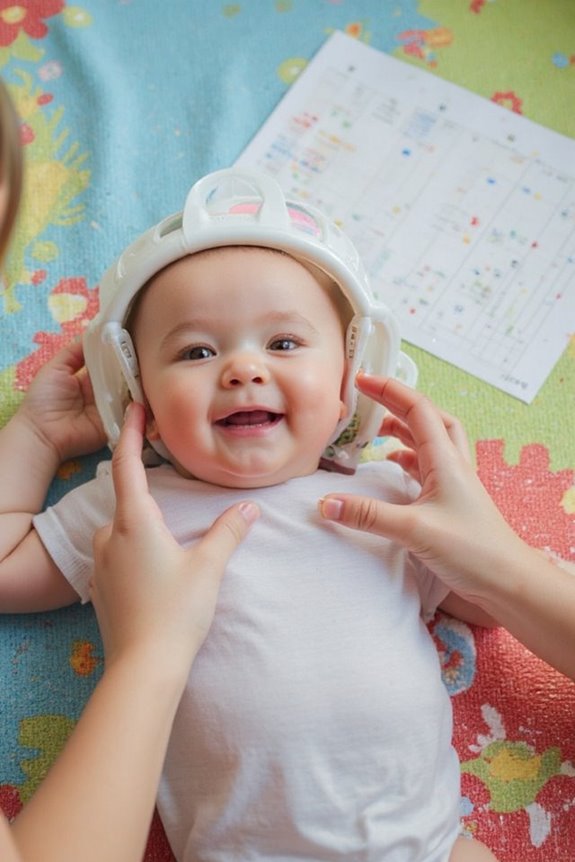
When your baby begins helmet therapy, you’ll enter a structured medical journey that typically spans several months. The process starts with a thorough helmet fitting where specialists take precise measurements to create a custom orthotic device tailored to your child’s unique head shape.
The treatment schedule is quite intensive:
- Your child will wear the helmet 23 hours daily
- Regular follow-up appointments occur every 2-4 weeks
- Treatment typically lasts 3-6 months
During each follow-up visit, technicians will:
- Measure your baby’s head growth
- Make necessary adjustments to the helmet
- Document progress with scans
Daily care is essential – you’ll need to clean the helmet with mild soap and verify it’s completely dry before placing it back on your baby’s head. Most children adjust to the helmet within 1-2 weeks.
Long-Term Health Benefits of Early Intervention
Early intervention through helmet therapy offers considerable long-term benefits that extend far beyond your baby’s infancy. When treatment begins before six months of age, I’ve seen notably better outcomes in cranial symmetry improvement, with shorter overall treatment durations.
The long-term effects of early helmet therapy include:
- Improved cranial symmetry that persists into adulthood
- Prevention of potential psychosocial issues related to appearance
- Reduced risk of complications from untreated plagiocephaly
These helmet benefits don’t interfere with your child’s developmental milestones. Research confirms that motor skills, cognitive development, and speech progression remain unaffected by the treatment process. By addressing head shape concerns early, you’re also helping prevent secondary issues like potential bullying or self-esteem challenges that might otherwise arise as your child grows.
Supporting Your Child Through Helmet Therapy
Beginning the helmet therapy journey with your baby requires preparation, patience, and practical knowledge. The process involves fitting a custom-made helmet designed to redirect your infant’s skull growth, typically worn 23 hours daily until about 12 months of age.
Practical Tips for Success:
- Clean the helmet daily according to orthotist instructions
- Monitor for pressure spots or skin irritation
- Attend all scheduled follow-up appointments for necessary adjustments
- Maintain normal activities and routines while using the helmet
Emotional Support Strategies:
- Connect with parent support groups who understand your experience
- Remember that most parents report satisfaction with helmet therapy outcomes
- Focus on the short-term nature of treatment versus long-term benefits
- Communicate concerns with your healthcare provider promptly
Regular assessments by orthotists will track your child’s progress throughout treatment.
Frequently Asked Questions
Are There Alternatives to Helmet Therapy for Mild Cases?
Yes, I recommend alternatives for mild cases including repositioning techniques during sleep, gentle exercises like tummy time, and strategic head positioning. These methods work well especially for babies under 4 months old.
Can Siblings or Family Members Have Similar Skull Shape Issues?
Like branches from the same tree, siblings can indeed share similar skull shape issues. I’ve seen family genetics play a significant role in how our cranial structures develop, creating noticeable sibling similarities in head shape.
Does Helmet Therapy Affect a Baby’s Hair Growth?
I’m happy to say helmet therapy rarely affects hair growth. Modern helmet design includes hair protection features to minimize friction, and any changes are typically temporary. Most babies show no hair growth differences during treatment.
How Do Helmets Impact Temperature Regulation in Hot Climates?
I’ve found that in hot climates, helmets can cause heat insulation issues for babies. I recommend frequent breaks and sweat management techniques like using breathable liners and keeping indoor spaces air-conditioned during treatment.
Can Babies Still Use Car Seats Comfortably With Helmets?
Did you know 80% of helmeted babies can use car seats comfortably? I’ve found that many convertible car seats accommodate helmets better. Always check helmet safety and car seat fit with a certified inspector.

